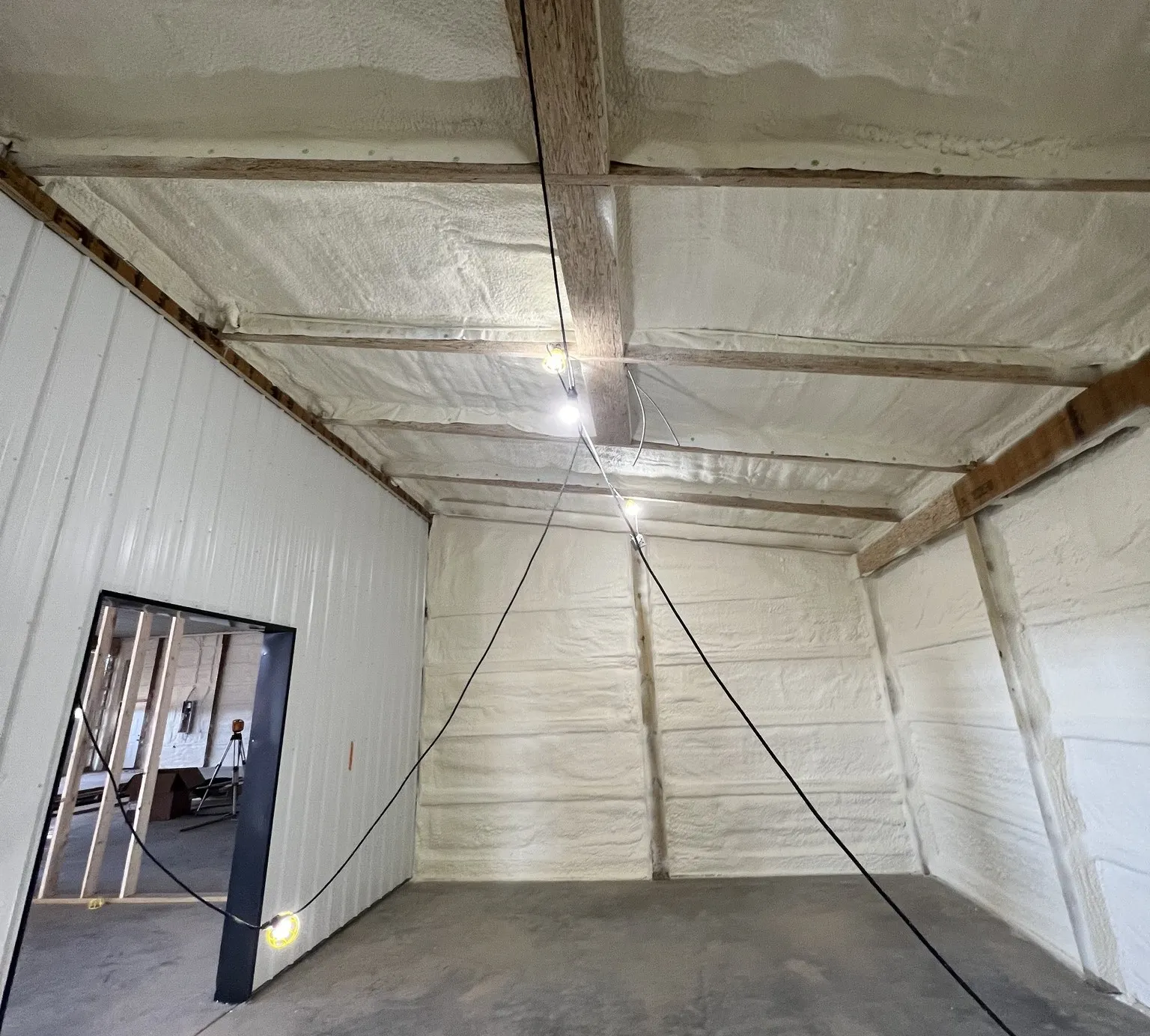
Spray foam insulation reduces energy bills in Devola, Ohio by minimizing heat loss in winter and limiting heat gain in summer. It forms an airtight barrier that reduces the workload on HVAC systems, lowering monthly utility costs. Compared to traditional insulation types, spray foam delivers higher thermal resistance (R-value), improved air sealing, and moisture control, all of which are critical in Ohio’s humid continental climate.
Energy savings are achieved through both immediate reductions in heating and cooling needs and long-term system efficiency. In homes and buildings where spray foam is installed correctly, owners typically see annual energy bill reductions between 15% and 50%, depending on structure condition, insulation type, and usage patterns.
Ohio Valley Spray Foam provides this information based on direct experience installing spray foam across a range of residential, agricultural, and commercial buildings throughout the Ohio Valley region, including Devola. Data reflects on-site performance results and verified outcomes.
Devola, located in Washington County, experiences wide seasonal temperature swings, from sub-freezing winters to humid summers. This climate variation increases energy demand for both heating and cooling.
Spray foam insulation adapts well to these conditions because:
Use closed-cell spray foam in basements and crawl spaces to prevent mold and cold air infiltration during Ohio winters.
| Insulation Type | R-Value (per inch) | Air Sealing | Moisture Resistance | Common Use Cases |
|---|---|---|---|---|
| Closed-Cell Spray Foam | 6.5 | Excellent | High | Exterior walls, basements, roofing |
| Open-Cell Spray Foam | 3.7 | Excellent | Moderate | Interior walls, ceilings |
| Blown-In Fiberglass | 2.2 – 2.7 | Poor | Low | Attics, retrofits |
Install open-cell spray foam in interior walls to reduce noise transmission and add thermal comfort without excess material cost.
A study from the U.S. Department of Energy (DOE) shows that air leakage accounts for 25-40% of the energy used for heating and cooling a typical home (DOE, 2023). Spray foam’s air sealing ability reduces this loss significantly.
In Devola homes:
| Performance Metric | Closed-Cell Spray Foam | Open-Cell Spray Foam |
|---|---|---|
| Thermal Resistance (R/in) | 6.0 – 7.0 | 3.5 – 4.0 |
| Water Absorption | < 1% | 20% – 30% |
| Air Barrier @ 1″ | Yes | Yes |
| Vapor Barrier | Yes (at 1.5″) | No |
| Structural Reinforcement | High | Low |

Start with attics and crawl spaces, where most heat loss occurs.
Most property owners notice changes within the first full heating or cooling season.
Not always. But system rebalancing or downsizing may be recommended to optimize efficiency.
Yes. Closed-cell foam, in particular, limits moisture migration from outdoors.
For reliable spray foam insulation in Devola, contact Ohio Valley Spray Foam. Call (740) 373-3626 or email [email protected] to schedule an assessment. Get guidance based on experience with local structures and climate conditions.
Closed- and open-cell spray foam both last 20+ years with minimal degradation when installed properly.
Yes, once cured, spray foam is inert. Proper ventilation during installation is essential.
Yes, in many cases. It depends on condition and type of existing material.
Many utility providers in Ohio offer rebates for qualified spray foam projects. Check with AEP Ohio or Columbia Gas.
No ongoing maintenance is needed, though periodic visual inspections help ensure integrity over time.